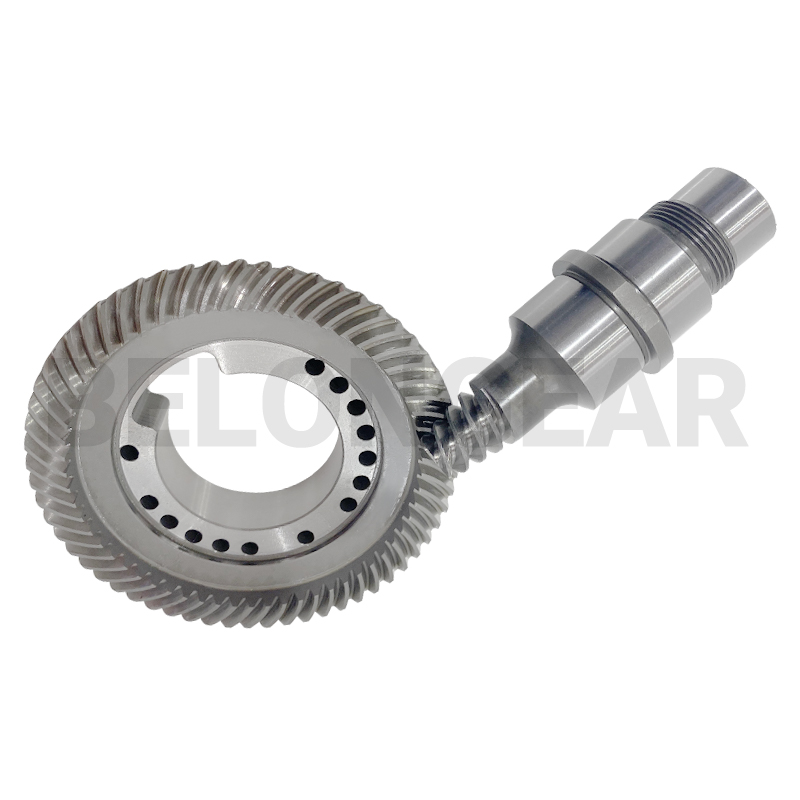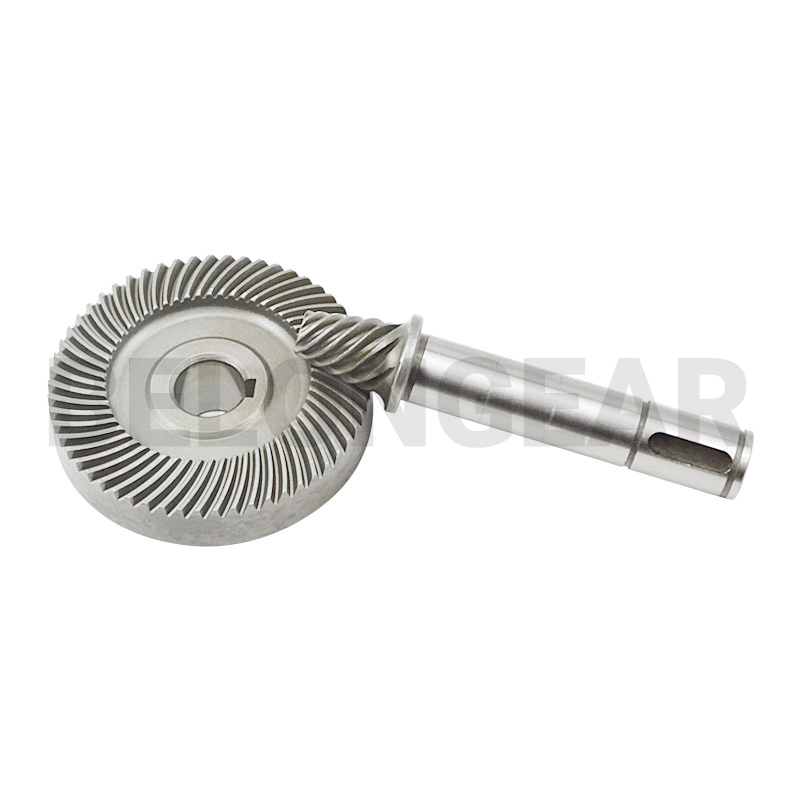Bevel gears are a type of gear used in power transmission systems to transfer rotational motion between two intersecting shafts that do not lie in the same plane. They are used in a variety of applications, including in automotive, aerospace, marine, and industrial equipment.
Bevel gears come in several different types, including straight bevel gears, spiral bevel gears, and hypoid bevel gears. Each type of bevel gear has a specific tooth profile and shape, which determines its operating characteristics.

The basic working principle of bevel gears is the same as that of other types of gears. When two bevel gears mesh, the rotational motion of one gear is transferred to the other gear, causing it to rotate in the opposite direction. The amount of torque transferred between the two gears depends on the size of the gears and the number of teeth they have.
One of the key differences between bevel gears and other types of gears is that they operate on intersecting shafts, rather than parallel shafts. This means that the gear axes are not in the same plane, which requires some special considerations in terms of gear design and manufacture.

Bevel gears can be used in a variety of different configurations, including in gearboxes, differential drives, and steering systems. They are typically made from high-quality materials such as steel or bronze, and are often machined to very tight tolerances to ensure smooth and reliable operation.
Post time: Apr-20-2023




